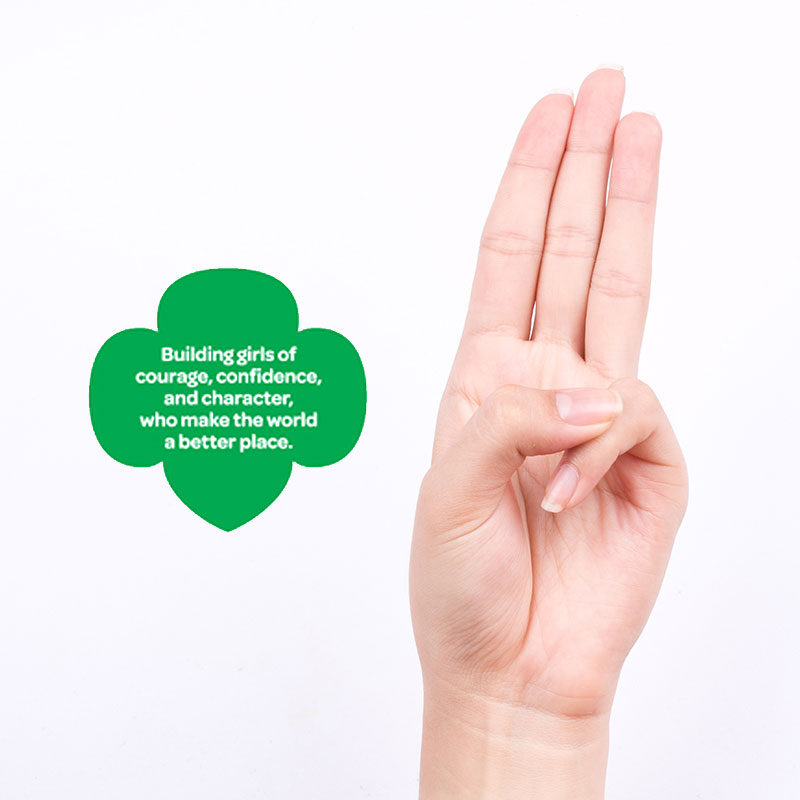
Steve Appelbaum, Creator of Animal Behavior College
February 23, 2021
Dr. Aysha Akhtar – Author & Fellow of the Oxford Centre for Animal Ethics
March 2, 2021
I’ve been involved in Girl Scouting since I was 9 years old and still participate as an adult. For girl members aged 5–18, Girl Scouts provides a great opportunity to discover passions and develop courage, confidence, and character. If the girls in your troop are passionate about animals, there are a lot of ways you can get involved with local shelters and rescues and help your girls learn about the needs of animals in their community.
Do a Badge or a Journey!
Most activities with Girl Scouts are pretty open ended and can be adapted to the interests of the girls. For instance, the badges and journeys that involve animals can include activities with local animal shelters. Use the Badge Explorer from Girl Scouts of the USA to learn what requirements each badge has. Here are a few examples and ideas:
Pets Badge (Brownies)
For this badge, Brownies (Grades 2–3) learn how to care for pets. Your troop could visit a local shelter and learn how different pets require different care, or help out by making fleece blankets for kennels.
Animal Habitats Badge (Juniors)
This badge is perfect for community cats! Juniors (Grades 4–5) learn about ecosystems and habitats. They can learn how feral cats have become part of the ecosystem and how TNR helps to control their population so that other species aren’t overhunted. Juniors could create outdoor cat houses for community cats for this badge and donate them to their local shelters.
Digital Photography Badge (Juniors)
After learning about digital photography, Juniors can use this badge to explore pet photography and volunteer their services to local animal shelters to take cute photos of adoptable pets.
Animal Helpers Badge (Cadettes)
Cadettes (Grades 6–8) learn about the human-animal bond with this badge by exploring how animals help us emotionally and how working dogs help with public safety and assist people with disabilities. Many shelters have programs that help struggling community members keep their pets in their homes. Interview a shelter worker or a beneficiary of one these programs to learn why being able to keep a pet in the home is so important for the human-animal bond.
Marketing (Cadettes)
With this badge, Cadettes will learn about brand identity and how even nonprofits like shelters and rescue organizations use media and marketing. Learn how great photos and public outreach can help shelters place more adoptable animals in homes. Volunteer to help your local shelter’s media team photograph animals for their website’s adoption page and social media.
Voice for Animals Badge (Seniors)
This badge helps Seniors (Grades 9–10) explore animal advocacy. Through this badge they can learn about laws surrounding TNR or lethal removal in their community, policies about adoption like those for FeLV+ cats, issues around homelessness or domestic violence and pets, and more. Try contacting local shelters for information about animal issues in your community, then consider contacting local or state representatives to ask what they’re doing to promote animal welfare.
Journeys take badges a step farther. They go more in depth and they include a Take Action project, which is a community service project.
Journey: 5 Flowers, 4 Stories, 3 Cheers for Animals (Daisies)
In this journey, Daisies (Grades K–1) can learn how to care for animals by visiting an animal shelter to learn about what care different animals need. Their Take Action project for this journey should teach others how to care for animals and could include making videos, flyers, or posters sharing what they learned from their trip to the animal shelter. One possible idea would be for the girls to design a flyer that shelters could give to adopters with some information about how to care for their new pet.
Journey: Think Like a Citizen Scientist (Daisies–Ambassadors)
This journey is very open ended. If you’ve got a troop of animal lovers, you can definitely explore community cats with this journey by learning how citizens monitor and care for cat colonies. Then use your Take Action project to learn how to do TNR.
Create Your Own Badge
Troops can also create their own badges, which is pretty simple, even though there isn’t a lot of information about doing it online. (This is because Girl Scouts has discontinued the Make Your Own program, but it is still possible to create your own badge.) All you need to do is decide on the requirements for your badge, design it, and get it made by a custom patch company.
If you’re an animal shelter, you can also create a badge for when troops visit or volunteer with you. If you’re not familiar with Girl Scouts, you can reach out to your local council or check out the programs from Kansas Humane or The Humane Society of Charlotte for help creating a badge. Otherwise, you can follow the same steps troops do for creating a badge.
Highest Awards
Highest Awards for Girl Scouts are for girls who plan and carry out a project that serves the community and makes their world a better place. If you’re a Scout looking to get your Bronze, Silver, or Gold Award, consider reaching out to local animal shelters and finding out what they need. Then you can design your project to fit that need. If you’re an animal shelter, you can contact your local Girl Scout council to let them know you’d love to be connected with troops and girls working on their awards.
Of course volunteering as a Girl Scout doesn’t always have to involve a badge or an award. Troops can always talk to local animal shelters to find out what help they need and maybe do a service project like building outdoor cat shelters, TNR, food drives, or just helping out around the shelter.
With Girl Scouts the possibilities are endless. For a little inspiration, check out these projects from real Girl Scout Gold Award Recipients: Leah built a catio for her local shelter to help improve the lives of feral cats staying at the shelter. Jealiany noticed that the homeless shelters in her community didn’t allow pets and advocated for keeping companion animals with their owners.
 Originally from Colorado, Krista Beucler received a Bachelor of Arts in creative writing at the University of Mary Washington (UMW) in Virginia. She was the editor-in-chief for Issue 7.2 of the Rappahannock Review, the literary journal published by UMW. Krista’s creative work has been published in From Whispers to Roars literary magazine. She is spending COVID-19 at home with her cats.
Originally from Colorado, Krista Beucler received a Bachelor of Arts in creative writing at the University of Mary Washington (UMW) in Virginia. She was the editor-in-chief for Issue 7.2 of the Rappahannock Review, the literary journal published by UMW. Krista’s creative work has been published in From Whispers to Roars literary magazine. She is spending COVID-19 at home with her cats.




